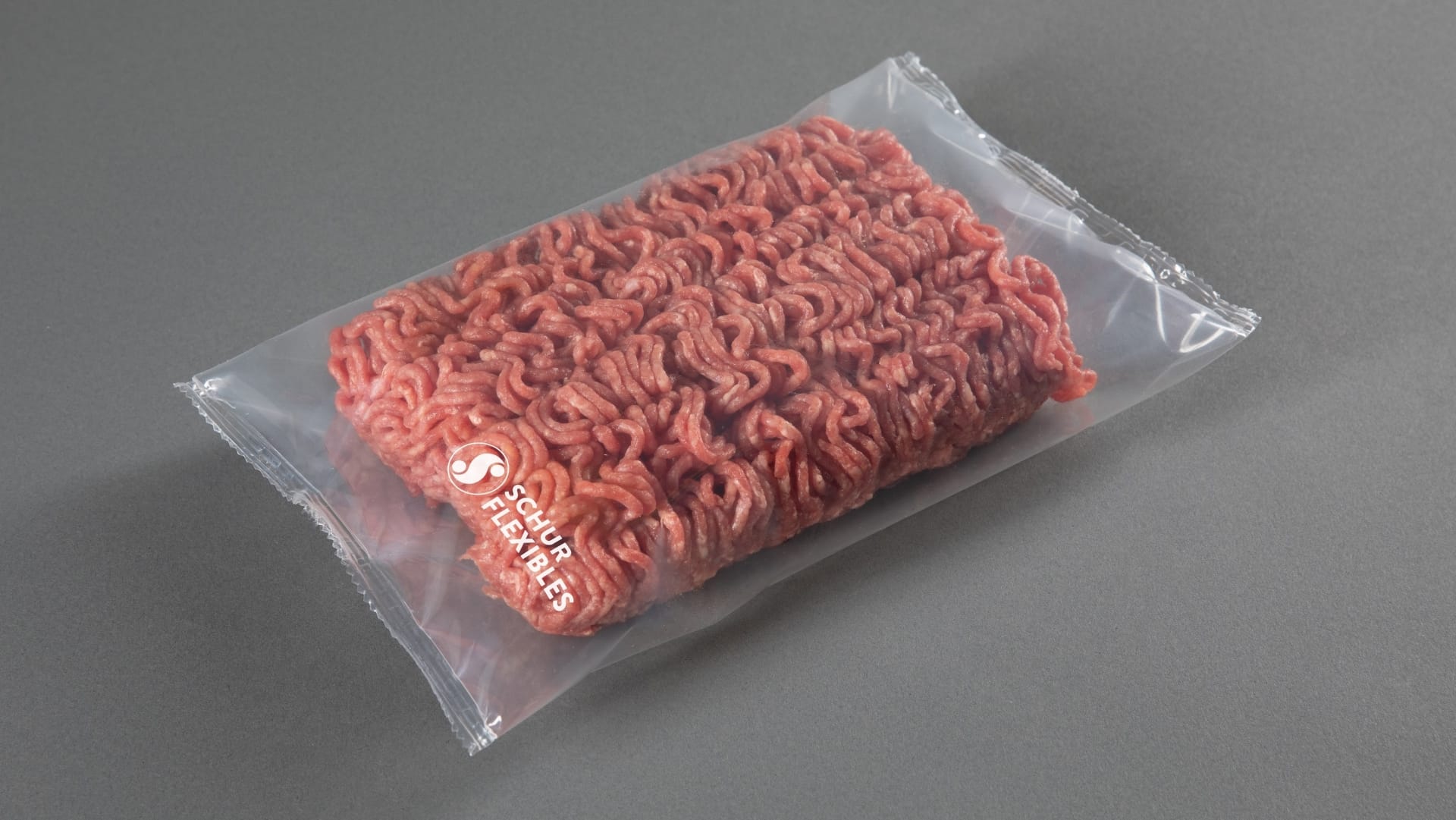As little plastic as possible – with as much product protection as necessary.
The industry has been working on technical solutions to reduce packaging material for years. The primary goal: cost savings with the same function. This development has saved large quantities of plastic compared to previous years. The popular example of minced meat tray packaging shows this particularly clearly. Whereas heavy trays with thick walls were used in the past, today the wall thicknesses are as thin as possible. The fact that this also makes an ecological contribution to conserving resources is a wonderful and important side effect. We often hear from the industry that the reduction of wall thicknesses has been technically exhausted. So getting even thinner would be challenging and expensive.

Image source: Schur Flexibles
It is easier with alternative approaches and formats, such as the “Flow Pack”. Unfortunately, up to now, consumer acceptance of this packaging has been rather slow. In the innovative example of Schur Flexibles, the special mono-material solution for improved recyclability is the crucial piece of the puzzle for contemporary packaging.
However, as already critically noted in our trend“Recyclability through mono plastic“, it must also be questioned here how sustainable this packaging really is without a functioning circular economy. Downcycling or incineration still affects minced meat packaging of any wall thickness.
Our conclusion: In any case, material reduction is an important step: it makes economic and ecological sense to save every superfluous gram of plastic packaging.
Best Practice: Diverse